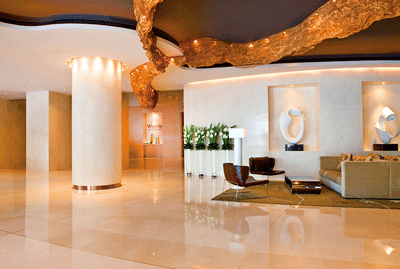
Sitting at the outdoor terrace of Grange Grill at The Westin Shenzhen Nanshan, with premium steaks and Penfolds vintages on the table, you’d never guess that 20 years ago, the area was mostly countryside. Today, the streets of Nanshan district in Shenzhen, China, are crammed with international hotels such as Venetian-themed Crowne Plaza and Spanish-inspired InterContinental, and luxury residential developments. Nearby, the Window of the World theme park, in its 17th year, is doing better than ever after its own metro station on the Luobao Line opened at the end of 2004.
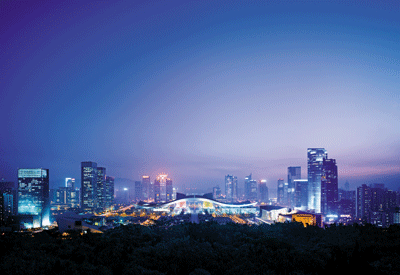
To the rest of the world, Shenzhen is known mostly as China’s premier Special Economic Zone - where the world’s factory first opened for business. The four main districts are Luohu, Futian, Nanshan and Yantian, with Bao’an, Longgang and Guangming and Pingshan being the suburbs. While Luohu has long been the most mature commercial area, efforts from the municipal government and the private sector have seen major investments pouring into other districts, in particular Futian. And instead of relying on manufacturing consumer goods, the city has pushed for the development of other industries such as IT, pharmaceuticals and banking, with great success.
A very young city, Shenzhen embodies the ambition of modern China and what the country is capable of. Designated as the country’s first Special Economic Zone by paramount leader Deng Xiaoping in the late 1970s, Shenzhen is a showcase of China’s determination in building its economic power. In three decades, it has grown from a fishing village to a metropolis of nearly nine million. The Shenzhen Daily newspaper reported recently that the city’s industrial output in 2010 was RMB409.26 billion (about US$62 billion), up 13.8 percent from the previous year. Its economy is the fourth largest among the country’s cities. Its airport, opened in 1991, is China’s fifth busiest aviation facility, welcoming 24.5 million passengers in 2009, according to the Civil Aviation Administration.
Shenzhen, however, remains an extremely underrated city. Unlike China’s better-known metropolises such as Shanghai, Beijing and Guangzhou, it doesn’t have much historical or cultural background, and pales when it comes to scenery next to secondary cities such as Hangzhou, Guilin and Xiamen. But it is, without doubt, where China’s economic future lies – or at least a very large chunk of it.
Sibling rivalry
In its early years, Shenzhen’s development mostly relied on neighbouring Hong Kong, then a British colony and a much stronger economy than its smaller sibling. It was a mutually beneficial arrangement: as Hong Kong moved from a manufacturing-based economy to a service-based one, factories shifted across the border to take advantage of lower costs, in particular for labour. Migrant workers from other provinces flocked there to work.
The other mainstay of the economy was dollars brought in by visitors from Hong Kong. Luohu, the location of the first cross-border checkpoint, naturally also became the first area to thrive. Shops, restaurants and nightclubs sprang up to welcome leisure travellers who crossed the checkpoint for cheaper goods and services. But it was notoriety that the city garnered for the most part during its fledging days as a commercial city. Substandard products and counterfeit goods flooded the shops and prostitution was rampant. From the moment you crossed the checkpoint, it was chaos through and through: hustlers, con artists and taxi scams all awaited gullible victims.
On April 21, 1991, journalist Sheryl WuDunn wrote in the New York Times: “It is an open secret that here in Shenzhen… economic progress has brought with it the seedy side of the free market: prostitution, corruption, smuggling and even drug trafficking… To many people in the rest of China, Shenzhen is a lawless place.”
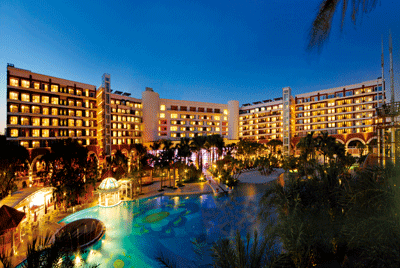
But three decades on, the city has completely transformed itself. Luohu’s railway station is now a bright, clean and well-organised facility connected to the city’s ever-expanding metro system, the first phase of which opened at the end of 2004. Streets have become much cleaner, roads are well paved and trees have been strategically planted to give the city a more soothing feel. In many areas, it feels like it could be any cosmopolitan city. On weekends, Starbucks are constantly packed with well-groomed customers spending leisurely afternoons with their favourite caffeine-loaded drinks, often surrounded by shopping bags from high-end boutiques.
In luxury malls such as MixC, international brands such as Louis Vuitton, Bulgari and Cartier are thriving. This is also where the Grand Hyatt Shenzhen, which opened at the end of last year, is located. At the outdoor tables of the hotel’s Italian restaurant, La Terrazza, trendy Shenzhen residents enjoy their antipasti, pasta and pizzas with bottles of Italian wine. According to hotel manager Robert Dallimore, many of the guests are local Chinese. “A good portion of our leisure guests are from Hong Kong, and there are also those from Shenzhen and South China coming to enjoy shopping next door in MixC. We have a lot of last-minute bookings, from people who are like, “Oh, the weather is nice” and just want a place to hang out,” he says. But the property is primarily a business hotel, he adds, with a lot of innovative MICE facilities such as two-storey residential style The Maison and Salon du Theatre with an open-kitchen the doubles as a stage.
The new power centre
The city’s growth shows little sign of slowing. While Luohu continues to be a vibrant commercial hub, the city’s financial sector is gradually moving westward to Futian. In the past five years or so, the municipal government has been trying to develop the area into Shenzhen’s Wall Street. In August, the Shenzhen Stock Exchange will relocate from Luohu to here, into a building designed by architects Ren Koolhaas and Kunle Adeyemi. Major domestic companies have been acquiring land here to build office towers, including Sino Life Insurance, which moved its headquarters from Shanghai to Shenzhen in 2008. Ping An Insurance, the country’s second-largest life insurer, plans to complete the 588-metre-tall Ping An International Finance Center in 2014, which will steal the crown as the city’s tallest building from the Di Wang Building in Luohu. It is located across the street from Coco Park, an upscale shopping complex and also Futian’s nightlife hub. The arcade’s west side features a row of bars and restaurants with outdoor tables that are packed out at weekends.
Futian is also expected to take a chunk of MICE business, partly thanks to the seven-year-old Shenzhen Convention & Exhibition Center, which has 220,000sqm of space over six floors. But the real turning point for this new CBD might turn out to be the completion of Express Rail Link (XRL). The railway will open in phases, with Futian Station scheduled for completion in June this year. If all goes well, by 2015 travellers will be able to board the train in West Kowloon, Hong Kong and reach Futian in 14 minutes. Guangzhou will only be 34 minutes further north.
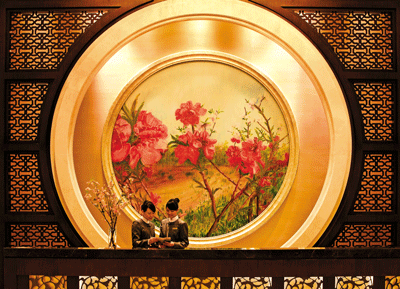
All this is presenting the hospitality sector with huge opportunities for expansion. Shangri-La, the first international hotel group to enter Shenzhen in the 1990s with a property right outside Luohu checkpoint, opened its Futian hotel in 2008, across the street from the future XRL station and within walking distance of the convention centre. Its 1,700sqm pillar-less ballroom is accessible from both the foyer entrance and a 36sqm elevator that can transport automobiles for car shows – a moneymaker in a country with double-digit year-on-year growth in car ownership. Shenzhen Daily reported this month that there are now more than 1.72 million private vehicles in the city.
According to Futian Shangri-la general manager Emil Leung, his property, which also has 53 serviced apartments, welcomes a higher percentage of business travellers while the older Shangri-La sees more leisure guests.
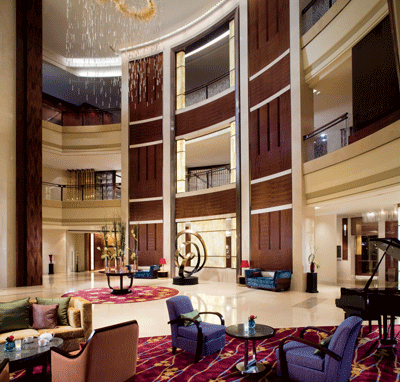
In March 2009, The Ritz-Carlton Shenzhen opened down the road from the Shangri-La and has become the hotel of choice of many major international corporations including Apple. IT is one of the city’s economic bedrocks and Shenzhen High-Tech Industrial Park, about 12km west in Nanshan, is bringing hotels in the city a lot of business. On our visit, the hotel was clocking up 90 percent occupancy and many of the conference facilities were taken up by initial public offering (IPO) events – including one by a local ham company – and corporate annual dinners.
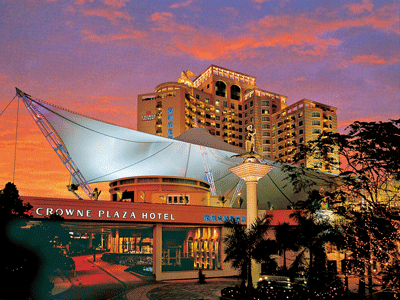
Other international hotels that have opened in Futian include the Sheraton Shenzhen Futian Hotel, Marco Polo Shenzhen and JW Marriott Hotel Shenzhen, where Olympic champion swimmer Michael Phelps once stayed and practised in the pool. Visible from the business centre here is the Xiangmihu Holiday Village, a complex of hotels, restaurants, shops and entertainment venues set amid landscaped gardens and surrounding a manmade lake. In the ‘80s, it was a sought-after weekend getaway and one of the main reasons Hongkongers came to Shenzhen. Today, it stands awkwardly, looking dated and subdued, amid an urban jungle that did not exist even 10 years ago. It’s testimony to the amazing speed at which this city moves – and the cruel reality of how things fall out of favour quickly here.
It’s time to play
Shenzhen used to be the playground of Hong Kong people, but no longer. As China has become more affluent, domestic travel in the country has grown tremendously. Shenzhen now has a sizeable middle class, driving demand for hospitality products.
Apart from being home to eight of the 11 universities in Shenzhen, the western district of Nanshan has traditionally been a leisure area, housing a host of theme parks such as Window of the World and Splendid China, as well as the expatriate neighbourhood Shekou with its vibrant nightlife. Nanshan is being aggressively developed by state-owned Shenzhen Overseas Chinese Town Holding Company and the district has been transformed in recent years. International hotels chains that have opened here include Kempinski, InterContinental, Crowne Plaza and, most recently, Westin. The bars of these properties, especially the nautically themed Galleon Restaurant and Bar in InterContinental – featuring a wooden ship said to be twice the size of the Christopher Columbus’ Santa Maria – and the poolside V Bar at Crowne Plaza, attract a loyal clientele of both local Chinese and expats.
But perhaps the most ambitious project of late by the developer is OCT East in Yantian, which occupies a 9sqkm area in Dameisha, an ecological tourism demonstration district featuring both beaches and mountains. There are theme parks, “scenic towns”, two 18-hole golf courses and resort hotels.
One of them, the Interlaken Hotel, which aspires to provide the environment of a central European town amid lakes, forests and mountains, has become a favourite among families and honeymooners. At weekends, many newly-weds in their full regalia can be seen on the premises posing for photos.
From this fairytale world, it only takes 20 minutes by shuttle bus to Huaxing Mahayana Hotel, a Buddhist-themed boutique hotel of 22 guestrooms with furnishings that combine mod cons with Zen elements. Vegetarian meals are served in the modestly decorated restaurant and in rooms.
But perhaps the most famous of all properties is the palatial Interlaken Aqua Boutique Hotel, which offers 94 guestrooms alongside a giant waterfall, an “Ecoadventure Valley”, the Seafield Theater and beer bars.
This is 21st-century China – where everything goes and nothing is impossible.








